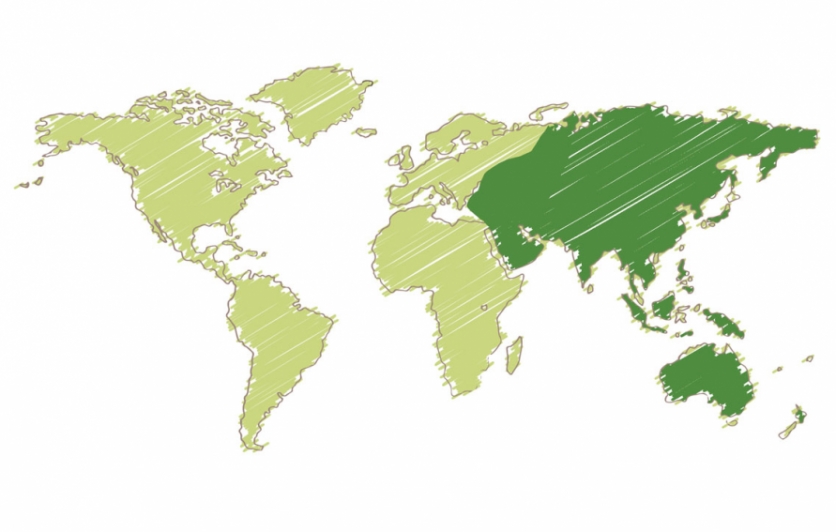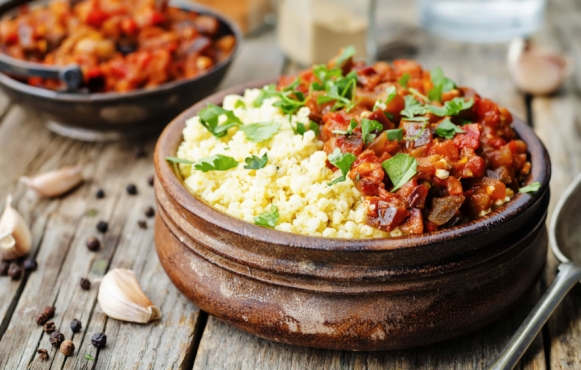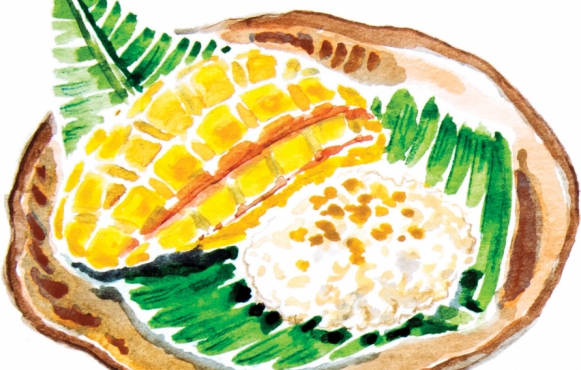Asia/Pacific

South Florida’s subtropical climate is ideal for growing fruits and vegetables from Southeast Asia, India and the Pacific: Mango, jackfruit and lychee are among favorite tropical fruits cultivated here more than a century ago in large part because of Dr. David Fairchild and other renowned plant explorers. Taste these treats at festivals at Fruit and Spice Park in Homestead and Fairchild Tropical Botanic Garden. Many Redland farmers grow Asian vegetables and fruits. You’ll find them at farm stands and Asian markets.
Foods from Asia and the Pacific
BANANAS AND PLANTAINS (Musa acuminata), first domesticated in New Guinea, spread through maritime trading routes in east Africa and South Asia. Portuguese sailors brought bananas to the Americas in the sixteenth century. Dessert bananas are eaten raw. Starchy plantains are typically cooked.
CITRUS (Citrus L.) – orange, grapefruit, lemon, tangerine, lime, pomelo and others – are native to Asia and Australia. Traders introduced citrus fruits to the Mediterranean. Spanish colonists brought oranges to Florida.
COCONUT (Cocos nucifera), believed to have originated in the Pacific and Indonesia, spread when people migrated by water. Traders introduced coconuts to Africa, the Caribbean and Brazil. One of the world’s most useful plants, coconut yields edible flesh; fiber; coconut oil, used in cooking and soaps.
EGGPLANT (Solanum melongena), a tropical perennial, is believed to have originated in India and was cultivated throughout Asia. It made its way to the Middle East and Mediterranean, where it is part of dishes like baba ghanoush, moussaka and ratatouille.
GINGER (Zingiber officinale) and turmeric (Curcuma longa), flowering plants whose roots (rhizomes) are used widely as a spice, originated in what’s now Indonesia, Malaysia and the Philippines, and arrived in Europe via spice traders. Ginger is used in savory dishes, candy, ginger ale and tea; in powdered form, it’s used as a spice for baked goods and desserts.
MANGO (Mangifera indica), thought by many to be the king of fruits, has long been cultivated in South Asia. It was brought to East Asia, Africa, the Philippines and Brazil. Hundreds of cultivars – green, yellow, gold, orange, red and deep maroon – grow in warm climates.
RICE (Oryza sativa) is a cereal grain eaten worldwide. Experts don’t agree on whether rice originated in India or China, but by 500 BC settlers had introduced cultivation techniques to the Philippines and Indonesia. Rice was cultivated in the Indus Valley, spread to the Middle East and then Spain and Italy. European colonizers introduced rice to Latin America, the Caribbean and Brazil.
SUGARCANE (Saccharum officinarum), a tall grass, was first domesticated in New Guinea and spread westward to Southeast Asia. Traders introduced sugarcane to China and India, then Europe and the Mediterranean. Christopher Columbus brought sugarcane to the Caribbean and Hispaniola.
Make It Yourself
Communities Near You
What’s happening near you
Visit Lauderdale Food & Wine Festival returns January 13-19, 2025
Las Olas Oceanside ParkFort Lauderdale






